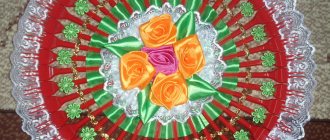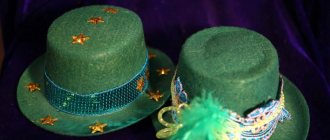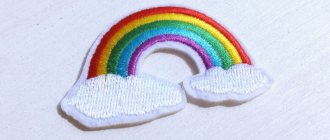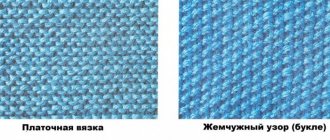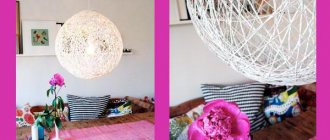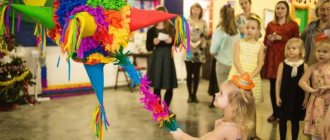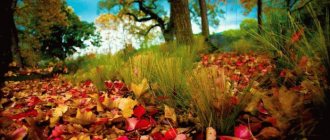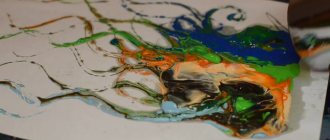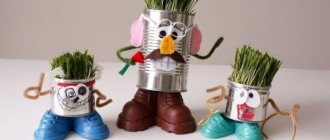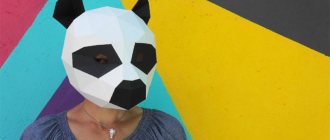Step-by-step master class on creating wooden photo backdrops with your own hands.
A wooden photo backdrop is a great choice for product photography! Photos against such a background immediately attract the eye with their texture and naturalness. The original and unique pattern of wood fibers creates an atmosphere of calm and comfort.
Moreover, such a natural background is ideal for photographing products made in the popular styles of rustic, country, Provence, loft, etc.
I also wanted a wooden background for product photography, and I decided to make it myself, and at the same time shoot a step-by-step photo master class and share my experience.
In order to make a wooden photo backdrop, we will need the following materials:
• boards from a hardware store;
• nails, hammer, sandpaper;
• brush (special brush for brushing);
• water-based stains;
• acrylic paints from different lines;
• wide flat brushes.
Thank you for reading our articles! We are giving you a promotional code BLOG for a 15% discount in our online store
. Enter it in the “enter coupon” field when placing your order.
The first step was to organize a trip to a hardware store. We choose the most textured boards with interesting patterns, fibers and veins. The boards are usually sold very long, but large hardware stores and hypermarkets usually have a sawing service. You can make a photo backdrop from many narrow boards, or from several wide ones.
I chose two boards 20 cm wide, 2 cm thick and 1.8 meters long. Even then, a plan emerged to make two double-sided square photo backdrops. Upon request, a specially trained person in a hardware store sawed each board into three parts (the length of each board was 60 cm). In order to fasten the three resulting boards together and get a wooden square (60x60 cm), several narrow slatted boards, nails and a hammer were also purchased.
And most importantly - a brush for brushing!
What background to use
For photographs, you can use light, uniform surfaces or original textured ones: you can use an antique wooden table, textured material with an original pattern, brick and even artificial marble.
It’s good if the photographer’s studio already has original textured surfaces, but if not, then how to make a photo backdrop with your own hands. Very often, photographers use artificial or real pieces of all kinds of materials. But the question of storing such items arises. However, there is another way out: you can make original photo backdrops yourself, while the financial costs will be minimal, and storing and moving them is quite simple.
Place for a photo zone
Where else besides home can you arrange a photo zone? A photo zone can be made both at home and on the street, in a studio, in a hangar, on the river bank. Be sure to look where the sun is. If the photo zone will be located on the street, then be sure to think about the time of the photo shoot, where there will be sun. Don't plan a photo shoot during the day. The shadows on the face will be harsh and unsightly. Think about where the photographer will stand. Leave space in front so that there is at least 2 meters from the photo zone to the shooting location. Remove all distracting details near the photo zone.
Preparation method
If you don’t know how to make a wooden photo backdrop with your own hands, then you can use one of the simplest methods. To work, you will need several wooden boards, liquid nails, sandpaper, a special matte wood varnish or stain.
The boards are cut according to the dimensions of the desired result; if necessary, each one must be sanded using sandpaper. If desired, the wood can be aged as much as possible by treating its surface with a wood brush.
When the boards are ready, they need to be fastened. For this, it is best to use liquid nails, especially if you need to make a double-sided background. The boards are laid out next to each other, face down (you should end up with a square or rectangle). Liquid nails are applied perpendicular to the first layer and secure the second layer of boards (also perpendicular with the face up). When the liquid nails have dried, the surface of the background must be treated with stain.
If you have been wondering how to make a photo backdrop out of wood with your own hands, then know that your background is almost ready. At your discretion, the stain can be applied several times, allowing each layer to dry. To emphasize the texture of the surface, the boards must be thoroughly sanded with sandpaper. The double-sided background can be painted in two colors. Finally, each side is coated with matte varnish in two layers, so the surface will be protected from grease, water, etc.
Preparing the wood for work
First you need to process the wood from the store. Let's take a brush in our hands and start brushing: we will remove the soft layers of wood, thereby giving it relief and emphasizing the texture.
With pressure, we move the brush in the direction of the wooden fibers back and forth. This process will generate a lot of dust; you should first prepare your work area and put a mask on your face.
After the brush, we take a metal shaggy brush and also “comb” our boards with it. This brush is stiffer; it deepens the wood texture even more.
We wipe the boards from dust with a damp cloth, wipe away dust and sawdust from the work area.
We go over all sides and edges of the boards with sandpaper. You need to sand everything thoroughly so that later, during the operation of the photophone, you don’t end up with a splinter. After sanding, we also wipe everything from dust.
We dilute the paint “Acrylic-Hobby De Luxe” Ivory with water to the state of liquid sour cream. We paint the boards this color. Dry the paint (15-20 minutes, you can speed up drying with a hairdryer).
In some places, rub the painted boards with vertical strokes (in the direction of the grain) with a piece of paraffin candle.
We cover the boards on top with a thick layer of black Acrylic Hobby paint. Let's dry it.
We go over the black background with sandpaper: where we rubbed with a candle, the paint will come off almost without any effort.
It seemed to me that the light layer was showing through too much and was sticking out. But you want the photophone not to distract more attention than the objects that will be photographed on it. I fill the brush with black paint and remove the excess with a few strokes on paper or a paper napkin. With a semi-dry brush I go over the brightest light stripes, muting them.
The next step (on a clean brush) is to fill the brush with Acrylic-Hobby De Luxe paint (Hemp color). I remove the excess paint and use light movements with an almost dry brush to cover the entire surface of the background. It is enough to go through 1-2 times, do not lighten the background too much, I plan it as a dark background.
I also use the dry brush method to lightly go over the boards.
How to make a concrete photophone with your own hands
A photophone is of interest to many photographers; it can be an excellent location for a wide variety of photographs. Such a background looks quite aesthetically pleasing and does not distract attention from the main model, while perfectly shading her.
It’s quite easy to make such a background at home from scrap materials. And although the word “concrete” is in the name, for such a background you only need wood putty. Additionally, “color” is useful - this is an ink of a certain color that will give the background a special shade. Let's assume that in order to make a gray background, you need to purchase putty, a spatula and black paint. When you mix white putty and black dye, you get a gray tint, which is applied to the wooden base.
Examples
1 of 8
The author of the article is Anna Chalaya, photographer, decorator and photo backdrop designer.
- [email protected]_
- WhatsApp +79626919390
Required materials and manufacturing steps
To make a concrete background for a photo, you need to prepare:
- wooden background;
- a can of wood putty;
- color scheme of the required color;
- putty knife.
When thinking about how to make a photophone with your own hands, first of all you need to choose a base; for these purposes you can use sheets of chipboard, plywood, etc. Everyone chooses the dimensions independently, but the most optimal is 50x50 cm. You need to make sure that the wood does not it was wet, otherwise the putty would fall off. The same thing will happen if there are greasy stains on the wooden base. The background can be pre-treated with a primer - it will improve the adhesion of the putty to the background.
Next you need to use putty. It is applied in a thin layer, covering all cracks and potholes. As a result, you should have a flat surface in front of you.
A second layer of putty is used to create a pattern on the background. In this case, you can work with white putty, or dilute it with black paint to obtain a gray tint. The background is covered with small movements, while the tree should not be visible.
When the work is completed, the background is given 5-10 minutes to dry. Then the spatula is moistened in water and passed over the surface again to form streaks on it. You shouldn’t make them too high; strokes about 0.3 cm high will be enough. The finished background is allowed to dry for about 1-2 days at room temperature.
Terms of use
When preparing to shoot and taking test shots, it is important to determine how clear the photo background should be. If you need it as a blurry image, you should open the aperture wider. This way the main subject will be in focus, and the photo background will be a light frame. If it is necessary for all details, including the background, to be sharp, it is necessary, on the contrary, to close the aperture as much as possible.
In most types of subject photography, photographers strive to position the photographic background so that the boundary between its vertical and horizontal surfaces is not visible. They should be smooth, creating the illusion of infinity around the subject.
When shooting for product catalogs, product photographers often choose neutral white. Beginners should take into account the features of working with it. When choosing lighting, it is important that the white background is brighter than the subject itself. Then it will be pure white, and not gray or yellow. At the same time, it is important not to overdo it in lighting the background, so as not to make it overexposed.
Also, for perfect whiteness, it is important to set the white balance correctly before shooting. To do this, you can use automatic mode or do it manually. To do this, you can use the white background itself, taking a test shot of it with the same lighting that will be at the time of shooting.
The photographer should clarify before subject photography whether the objects in the photo will remain on the selected photo background or whether they will need to be cut out to place on another. It is always easier to cut out objects from a monochromatic, evenly lit background during post-processing.
When photographing objects, you should pay attention to ensure that objects do not blend into the background. Using contrast in color or well-chosen lighting will help highlight the main object. It is worth remembering that the viewer’s eye is first attracted to the most illuminated element in the frame and red objects.
Paper backgrounds
If we talk about paper, this is perhaps one of the most budget options. It is perfect for occasional filming and home use. If you don’t know how to make a photophone with your own hands from paper, then don’t be afraid, because it’s not as difficult as it might seem at first glance. Rolls of wallpaper, whatman paper, corrugated paper, etc. are most often used in work.
The paper is lightweight, easy to install, store and transport, but its main disadvantage is its lack of strength and soiling. If such a background is laid out on the floor, it will most likely be disposable, since stains and marks are very noticeable in photographs.
If you don’t know how to make a photo backdrop out of cardboard with your own hands, then you can use the most ordinary wallpaper to make a background at home. Moreover, they don’t have to be covered with anything, because today there are wallpapers on sale with a wide variety of textures and patterns that will look very beautiful in photographs. Of course, it is not advisable to purchase a whole roll for several photographs, but you can find the necessary scraps of wallpaper at home, because after renovation many people have such scraps left over.
Winter photo zone outdoors
The main thing is that there is no bitter winter frost outside. You can break the camera and appear in the photographs with a red nose, like Santa Claus. May you not be Santa Claus on New Year's Eve.
You can be a Snow Maiden with rosy cheeks. So we monitor the weather and choose a day without blizzards, blizzards and bitter frost. Although some of you will say the opposite. Photos in the cold turn out magical and fabulous if there is also sun outside. In general, it could turn out to be a fairy tale. Try this and that.
Use everything you see on the street. It could be a snow-covered Christmas tree, a bright red fence, a snowman that children made, rowan trees, lanterns, benches. All this can be used for a winter photo zone outside. Take a bright blanket with you. Wear a bright skirt and red lipstick if you're a girl. If you are a guy, then a bright jacket or tie, a fur coat, and felt boots will suit you.
Fabric photophone
A fabric base for the background or fabric with a pattern printed on it is used quite often. This is not surprising, since it is quite durable, can be ironed and is quite easy to transport. Moreover, the fabric base is quite easy to attach, while it looks beautiful in photographs and does not scatter or reflect light. You just need to figure out how to make a photophone from fabric with your own hands.
Simply stretch a fabric backdrop or canvas onto a wooden or metal frame, and your own portable backdrop is ready. It is best to choose a textured fabric; of course, you can also find fabric with patterns, but it is worth remembering that the background should remain a background, and the patterns should not be too noticeable (you cannot “interrupt” the subject of filming).
The disadvantage of the fabric may be its kinks and irregularities, which are not intended by the plot. The advantage is that such a photo backdrop can be of absolutely any size, and it can be mounted on a wall, gate, etc.
How to quickly make a photo backdrop: the easiest way
To get a beautiful photo, you don’t have to make a background out of wood, paper or fabric. If you are interested in how to make a photo backdrop with your own hands quickly and inexpensively, then this method will be a great find for you.
Without much difficulty, you can get a background of a wide variety of colors and textures, and you can make a lot of them, since such backgrounds do not take up much space.
You just need to prepare a camera with good resolution and wait for good weather. The main task is to select the necessary textures. You can take a photograph of an old fence, a crumbling wall, a large snag, etc. In this case, the photographs should be clear, sharp and not overexposed.
And then it’s a matter of technology...
At home all that remains is to look through the photographs. You need to select only those areas in the photo that are suitable for the background. Using Photoshop, you can remove everything unnecessary (leaves, stones, etc.), and create a suitable background, using different filters, tones, contrast, etc.
The finished files just need to be taken to the printing house and printed, choosing the appropriate size for yourself. However, in order to use photobackgrounds in further work, you must use fairly thick sheets of paper for printing.
If you figure out how to make your own photo backdrop, you can end up with an impressive option. However, you need to remember that a good background and the presence of a professional camera will not become the basis for a beautiful photo. In addition, you need to follow the basic rules of photography, think through the composition and put an idea into the photo, and then the photographs will be interesting not only to you, but also to those around you.
Ceramics
Ceramic tiles or porcelain tiles are a very good photo backdrop for photos.
If you have several slabs left after repairs, then you can safely use this background for your shots. If your bathroom has good lighting and beautiful ceramic tiles, then why not? This is the perfect place to take pictures with the relaxing sound of water! As a result, you can get unusual images with amazing effects!
Photos of clothes on such a photo background will look simply amazing!

